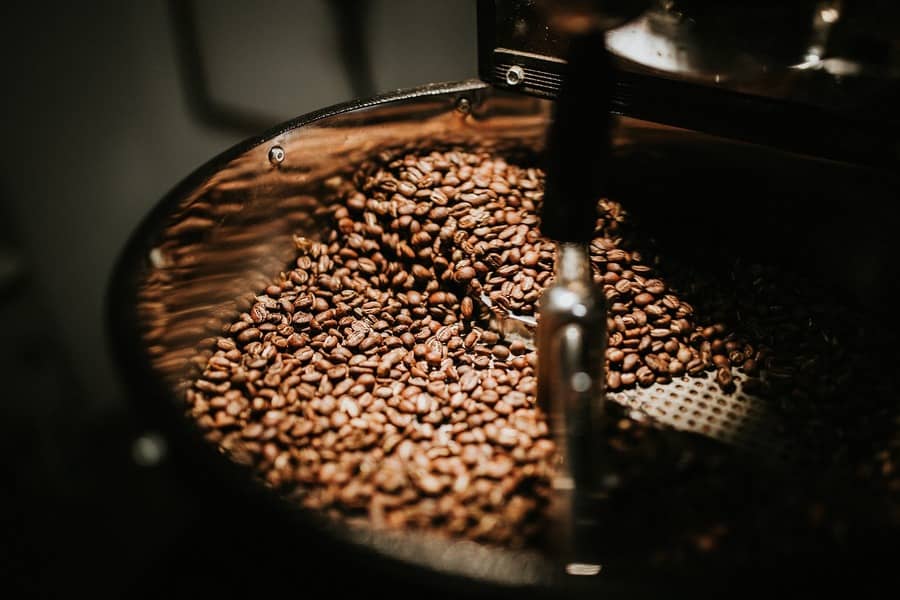The flow of sales continues at a very steady pace, even with the recent rise in prices. There was even a little more business, but in a very slow way and without generating great pressure on the supply side. The perception that there was more coffee available resulted in greater interest on the part of sellers, which did not translate into a continuous and linear flow but ended up improving the total volume of business.
The perception of more physical coffee, due to the flow adjustment, led SAFRAS to revise its number upward for Brazil’s 2022 crop, which increased to 58.90 mln bags, against 57.30 mln bags previously. Production is split between 35.95 mln bags of arabica and 22.95 mln bags of conillon. Based on this review, the SAFRAS monthly sales survey indicates that up to March 8, sales of the 22/23 crop in Brazil were at 83% of the expected production. Advance of only 5% compared to the previous month. The flow of sales remains well below the same period last year, when it reached 89%, and below the average of the previous 5 years, which points to 86% of committed production.
Arabica sales reach 81% of the total crop, signaling a slight flow improvement. In the same period last year, the commitment by growers was around 87%. The five-year average for the period is around 84%. The increase in the crop projection and the lower percentage committed by growers enhance a greater volume of physical coffee than imagined in this final stretch of the season. This reinforces the idea that the difficulty faced by demand is less linked to availability and much more to the very withdrawn attitude of growers.
Conillon sales gained a little more pace, with rising sales interest. The proximity of the harvest, which is expected to be very good again, ends up bringing more remaining coffee to the market. Growers want to avoid holding physical coffee in this transition between crops, given the risk of sharper price lows with the advance of the supply of new conillon into the market. Conillon sales reach 88% of the crop, still far below 94% in the same period last year and below the 90% of the five-year average. The domestic industry, especially roasted and ground, adopts a more reticent stance, stretching stocks by betting on a large crop in 2023 and lower prices.
Brazil’s 2023 crop sales reach 19% of potential production
The sales flow of the new crop is still very slow. The inverted market on ICE US and the weaker differentials for the new crop weigh against the indications in advance for Brazil’s 2023 crop. Good cup with delivery and payment in September 2023 is bidded at around BRL 1,000 a bag. In the physicals, it is indicated at BRL 1,090 a bag. The negative difference of BRL 90 per bag takes away the interest of growers.
The growers’ decision-making, however, should be based on the margin, which is the difference between cost and revenue (price), rather than on the price comparison between the physical market and the new crop, which is distorted due to the current season’s tighter supply. The fact of growers having locked (sale for future delivery) below the price practiced at the crop arrival in 2022 ends up influencing the decision-making on the 2023 crop. They are more reticent about setting forward prices, betting on some weather adversity from now until the crop, such as a drought or another frost. And they proceed with the sales. Although forward sales prove to be statistically very profitable in the long run, what counts is the last negative impression, which hinders the business flow.
Thus, new-crop sales moved very little last month, being concentrated on barter operations. The preliminary idea is that growers have committed only 19% of the potential of Brazil’s 2023 crop. The sales flow is well below the same period last year, when it reached 28% of the production potential.
Arabica coffee sales continue to accelerate, with 27% of the crop committed. This percentage involves barter operations, lockings at trading companies, and rollovers from the past crop. Cerrado and Mogiana are where the weight of rollovers is most significant. In the Cerrado, for example, the idea is that between 30% and 40% of negotiations with the 2023 crop are linked to sales rollovers from 2022. In the same period last year, sales reached 33 but for a much smaller crop than the one expected this year.
In the case of conillon, barter operations, mainly, and some price appraisal at industry, served to unlock forward sales. The idea is that 5% of the potential of the 2023 conillon crop in Brazil are already committed by growers. Sellers are more flexible in view of the proximity of the crop, which from the second half of March should already start in Rondônia. The shorter posture of industries, which hold positions hoping for lower prices, prevented sales from going further. The growth in arabica production ends up strengthening the strategy of the roasted and ground industry, which has really been giving the dynamics of business in the domestic conillon market. The fact is that the very high differentials of the Brazilian conillon FOB Vitória end up keeping the interest away from foreign demand, which strengthens the local industry’s strategy.

